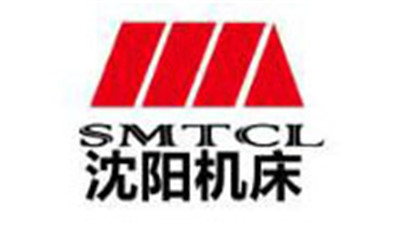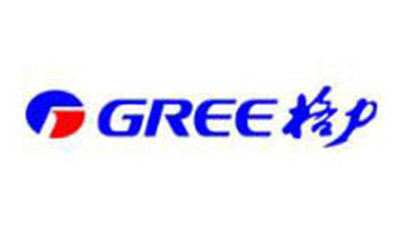Revolutionizing Power Efficiency: The Future of Ferrite Transformers in Renewable Energy Systems
Table of Contents
- Advancements in Ferrite Material Technologies for Transformers
- The Role of Ferrite Transformers in Renewable Energy Integration
- Comparative Analysis: Ferrite vs. Traditional Transformers
- Enhancing Power Efficiency through Ferrite Transformer Design Innovations
- Challenges and Solutions in Adopting Ferrite Transformers for Green Energy
- Future Trends: Ferrite Transformers in Smart Grid Applications
- Transforming Efficiency in Electrical Systems: Insights from Latest Industry Reports on Low Frequency Clamping Frame Transformers
- FAQS
- Conclusion
- Related Posts
You know, as everyone’s really focusing more on energy efficiency and sustainability these days, Ferrite Transformers are becoming more and more important in renewable energy setups. I read that, according to the International Energy Agency, the world’s renewable energy capacity is projected to hit over over 5,000 GW by 2024. Crazy, right? That kind of huge jump means we really need innovative tech that can boost performance without wasting too much energy. Ferrite Transformers are pretty exciting in that regard—thanks to their awesome magnetic properties and ability to work at high frequencies, they can really help improve power efficiency.

Speaking of companies pushing this forward, Dezhou Xinping Electronics Co., Ltd., started back in March 2001, and they’re a national high-tech enterprise that specializes in making all sorts of precision electronic transformers—like Ferrite Transformers. With their cutting-edge tech and deep expertise in transformer design, they’re in a good spot to help shape energy systems that aren’t just efficient but also better for our planet. It’s all about supporting that global push toward a greener, more sustainable future, you know?
Advancements in Ferrite Material Technologies for Transformers
You know, the progress we've seen with ferrite materials in recent years has really shaken things up in the renewable energy world. It’s all about managing power more efficiently, and honestly, the market is booming. Estimates suggest that by 2034, the global ferrite market could hit around 12 billion bucks — pretty wild, right? What's driving this growth? Well, a bunch of cool innovations in soft magnetic composites and the increasing use of ferrite in electric vehicles and power electronics. All of this is super important for pushing forward that whole green energy movement.
Oh, and on top of that, the way we're using 3D printing to make magnetic materials is pretty exciting. It’s bringing better performance to ferrite transformers, not to mention allowing for more customization depending on specific needs. The industry’s really shifting gears toward cleaner energy solutions, and these developments in ferrite materials are key for tackling the challenges that come with high-frequency transformers. All in all, it's paving the way for energy systems to be way more efficient than ever before.

The Role of Ferrite Transformers in Renewable Energy Integration
 Ferrite transformers are pretty crucial when it comes to integrating renewable energy sources—they help in making sure power gets converted and managed efficiently. Just recently, there have been some cool advances in materials, like Gd-doped magnesium ferrite used in hydroelectric cells. It’s a great example of how ferrite-based tech can boost energy production, especially through innovative stuff like water splitting. These breakthroughs are not only pushing eco-friendly electricity generation forward but also showing how tiny imperfections in materials can actually affect performance. That’s why ongoing research into optimizing ferrite transformers for renewables is so important.
Ferrite transformers are pretty crucial when it comes to integrating renewable energy sources—they help in making sure power gets converted and managed efficiently. Just recently, there have been some cool advances in materials, like Gd-doped magnesium ferrite used in hydroelectric cells. It’s a great example of how ferrite-based tech can boost energy production, especially through innovative stuff like water splitting. These breakthroughs are not only pushing eco-friendly electricity generation forward but also showing how tiny imperfections in materials can actually affect performance. That’s why ongoing research into optimizing ferrite transformers for renewables is so important.
On top of that, high-voltage gain solid-state transformers are a real game changer for connecting renewable energy and AC power. Thanks to new circuit designs like DC-DC converters and dual active bridge setups, these transformers are way more efficient and flexible. Companies like Dezhou Xinping Electronics are leading the way, building super precise electronic transformers to meet the increasing demand for sustainable energy solutions. All in all, the combo of ferrite transformers and renewable energy technology just looks really promising for a more efficient and greener future.
Comparative Analysis: Ferrite vs. Traditional Transformers
Lately, there's been a lot of talk about how efficient transformers are in renewable energy setups. When you compare ferrite transformers to the good old iron-core ones, you'll notice some pretty significant differences in how they perform and where they're best suited. Ferrite transformers, which are especially great at handling high-frequency operations, tend to lose less energy — in fact, they can cut down no-load power losses by around half compared to traditional types. The International Energy Agency (IEA) even highlighted that designing transformers with ferrite cores can boost overall energy efficiency in renewable projects, which helps make the grid more reliable.
If you're thinking about using transformers in renewable systems, it’s worth paying attention to their operating frequency ranges. Ferrite transformers excel at high frequencies, so they're perfect for things like solar inverters or wind turbine converters. Plus, they’re lighter and smaller, making installation a lot easier and potentially saving some bucks on the whole setup.
Now, when it comes to costs, it’s a bit of a mixed bag. Sure, ferrite transformers might cost more upfront, but considering how durable they are and the lower operational expenses — as pointed out by the Electric Power Research Institute (EPRI) — they can actually be cheaper in the long run. Plus, choosing ferrite tech also helps reduce the environmental footprint of energy systems, which is a big plus for sustainability-minded projects.
Efficiency Comparison of Ferrite Transformers vs. Traditional Transformers
This chart illustrates the power efficiency of ferrite transformers compared to traditional transformers across different frequency ranges. Ferrite transformers show a significant advantage in higher frequency applications, making them ideal for renewable energy systems.
Enhancing Power Efficiency through Ferrite Transformer Design Innovations
Switching over to renewable energy sources is more important than ever in our battle against climate change, but one of the big hurdles is figuring out how to make everything more energy-efficient. Luckily, there's some pretty exciting stuff happening with ferrite transformers. I recently came across a report from ResearchAndMarkets that predicts the global market for these transformers will grow steadily, about 8.1% each year, mainly because they’re really good at cutting down energy losses during power conversion. By using smarter materials and more precise engineering, these transformers can run at higher frequencies, which means they can boost overall power efficiency quite a bit.
Now, if you're thinking about choosing a ferrite transformer, a couple of things to keep in mind: check the frequency range that matches your needs. Higher frequencies can cut down on core losses, but they can also cause overheating if you're not careful. So, good thermal management is key if you want these components to last longer and perform well.
On top of that, new techniques such as tweaking the core shape and using advanced magnetic materials can seriously boost performance. The Electric Power Research Institute (EPRI) mentioned that these kinds of improvements could save up to 20% of energy in certain renewable setups. As manufacturers keep working on refining these designs, it’s pretty clear that ferrite transformers might actually change the game when it comes to power efficiency in renewable energy projects—and that’s pretty exciting stuff.
Challenges and Solutions in Adopting Ferrite Transformers for Green Energy
Switching over to ferrite transformers in renewable energy setups is pretty promising—it could really boost power efficiency. But, honestly, there are some hurdles we need to clear before it becomes the norm. One big concern is the price tag upfront; integrating these transformers into existing systems can be pretty costly at the start. While they do perform way better across high-frequency applications, that initial investment can make people hesitant about jumping in. To help out, folks involved should push for things like government subsidies or tax breaks—anything that can lighten the financial load and make adoption a bit easier.
Then there's the technical side of things. Not all renewable energy tech works seamlessly with ferrite transformers. Solar, wind, and battery storage systems all have their quirks, and sometimes the transformers just don’t quite match up. Teaming up with manufacturers to develop more adaptable transformer designs could really make a difference and help these technologies fit together more smoothly.
If you’re thinking about making the switch, it’s a good idea to do a detailed feasibility check first—see how well ferrite transformers would work with your specific setup. And, if possible, try running some pilot programs. Testing things out on a smaller scale first lets you iron out any issues before going all in, making sure the tech actually fits your needs.
Revolutionizing Power Efficiency: The Future of Ferrite Transformers in Renewable Energy Systems
| Dimension | Current Value | Future Target | Challenges | Possible Solutions |
|---|---|---|---|---|
| Efficiency (%) | 93 | 98 | Material limitations | Innovative material development |
| Weight (kg) | 5 | 3 | Size constraints | Compact design techniques |
| Cost (USD) | 200 | 150 | High manufacturing costs | Economies of scale |
| Operating Temperature (°C) | 85 | 120 | Thermal management | Advanced cooling techniques |
| Lifespan (years) | 10 | 20 | Aging materials | Durability testing |
Future Trends: Ferrite Transformers in Smart Grid Applications
You know, with how quickly smart grid tech is evolving, it's no wonder that ferrite transformers are becoming such a key piece of the puzzle. I mean, according to some report I came across from Markets and Markets, the global smart grid market is expected to jump from around $26 billion in 2020 all the way up to over $61 billion by 2026. That growth is mainly fueled by the pressing need for better energy management and the push to include more renewable sources. Ferrite transformers, being lightweight and great at high-frequency operations, are getting more and more popular in these smart grid setups—they help make energy distribution more efficient and cut down on energy loss.
If you're thinking about how to get these transformers to work well in your smart system, a couple of tips might help. Picking the right core materials and designs that can handle high frequencies without overheating is crucial. Using simulation tools can really make a difference—helping you test out your designs before going all in. And teaming up with experienced manufacturers can really speed things up, especially when you need custom solutions that fit specific needs. All of this together boosts overall system performance.
As more and more renewable energy sources come online, ferrite transformers are set to play an even bigger role. There’s this other report from ResearchAndMarkets that suggests energy systems using ferrite transformers might get up to 15% more efficient by 2025. That’s a pretty big deal—it can really change the game for big renewable projects, making them more economically viable. Not only does this support greener goals, but it also helps keep the entire smart grid more stable and sustainable in the long run.
Transforming Efficiency in Electrical Systems: Insights from Latest Industry Reports on Low Frequency Clamping Frame Transformers
In the evolving landscape of electrical systems, low-frequency clamping frame transformers have emerged as pivotal components, redefining efficiency and reliability in industrial control. According to recent industry reports, these transformers are designed to meet the rigorous demands of modern applications while adhering to IEC standards. This ensures not only compliance but also facilitates seamless integration into existing systems. The use of an amorphous alloy core significantly enhances energy conversion, leading to lower operational losses and improved sustainability—key factors as industries strive towards greener solutions.
Dezhou Xinping Electronics, with over 20 years of expertise, stands at the forefront of this transformational wave. Their low-frequency clamping frame transformers exemplify superior engineering, catering to diverse industrial needs with a commitment to quality. As noted in various industry analyses, the trend is shifting towards dry-type transformers due to their enhanced insulation and durability, making them ideal for applications ranging from power generation to smart grids. The company’s state-of-the-art manufacturing facility in Dezhou, China, alongside high-quality materials sourced from Japan and South Korea, ensures that each transformer not only meets but exceeds industry benchmarks for efficiency and reliability.
As industries increasingly adopt advanced electrical solutions, the demand for reliable and efficient transformer technologies will continue to climb. Reports indicate that the global transformer market is projected to grow significantly, driven by the expanding energy sector. This growth underscores the importance of reliable manufacturing partners like Dezhou Xinping Electronics, which are pivotal to supporting this transition and bolstering overall operational efficiency in electrical systems.
FAQS
: The growth is largely driven by innovations in soft magnetic composites, the increasing application of ferrite materials in electric vehicles and power electronics, and the demand for efficient power management in renewable energy systems.
The global ferrite market is projected to reach USD 11.92 billion by 2034.
3D printing enhances the performance characteristics of ferrite transformers by improving magnetic properties and enabling customization to meet specific application requirements.
Ferrite transformers are pivotal for enhancing energy efficiency and reliability in smart grid applications, optimizing energy distribution, and minimizing losses due to their lightweight and high-frequency capabilities.
The global smart grid market is projected to grow from $26.2 billion in 2020 to $61.3 billion by 2026.
Tips include selecting appropriate core materials and designs for high-frequency operations, using simulation tools for design validation, and collaborating with experienced manufacturers for customized solutions.
The efficiency of these energy systems may improve by up to 15%, which could significantly impact the economics and feasibility of large-scale renewable energy deployments.
Ferrite transformers are essential for achieving efficient energy storage and transfer, supporting environmental goals, and contributing to the stability and sustainability of smart grid infrastructure.
Conclusion
This article dives into how Ferrite Transformers are really changing the game when it comes to boosting power efficiency in renewable energy setups. It talks about some of the latest breakthroughs in ferrite materials—things that make these transformers perform better and last longer. By bringing Ferrite Transformers into the mix, renewable energy systems can be way more efficient than the old-school models, helping cut down on energy loss and heat that usually comes with these systems.
Plus, the piece discusses some of the cool design upgrades that are making Ferrite Transformers even more effective. It also touches on the hurdles people face when trying to use them in green energy projects—kind of like the bumps in the road—and offers some ideas on how to overcome those challenges. Looking ahead, the article predicts future trends, especially how Ferrite Transformers could play a big role in smart grid tech, making our energy systems more sustainable and efficient overall. Oh, and by the way, Dezhou Xinping Electronics Co., Ltd.—a high-tech company from the ground up—is pretty well-positioned to help push these innovations forward in transformer tech.
Related Posts
-

Understanding the Basics of Ferrite Transformers for Modern Applications
-

Ultimate Guide to Understanding the 24 0 24 Transformer in Modern Applications
-

Unveiling the Future of 11kv Transformers at the 138th Canton Fair 2025 in China
-

Unlocking the Advantages of Axial Leaded Power Ferrite Bead Inductors for Modern Electronics
-

Understanding the Role of Coil Inductors in Modern Electronics and Their Applications
-

The Future of Enhancing Device Performance with Chip Common Mode Chokes Inductor


















